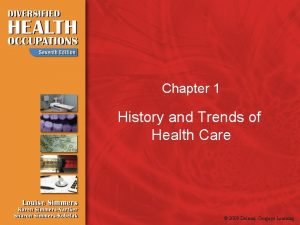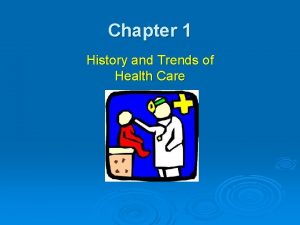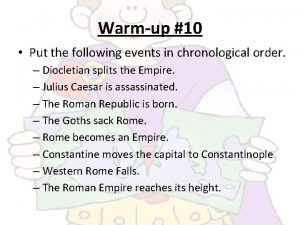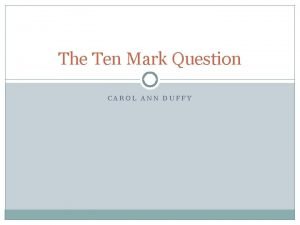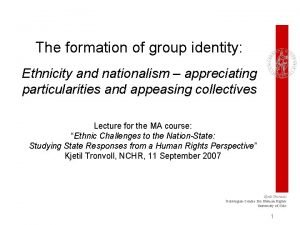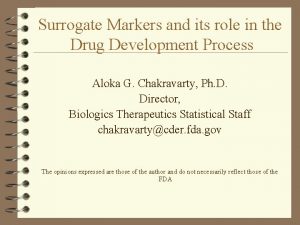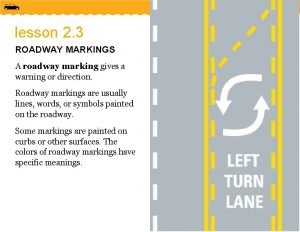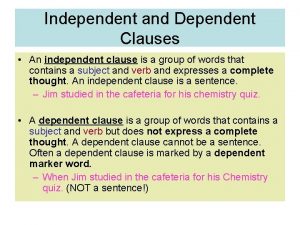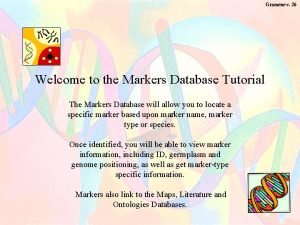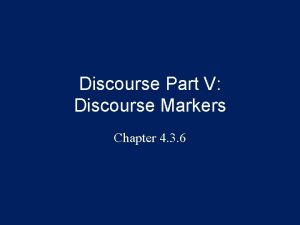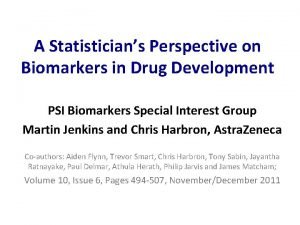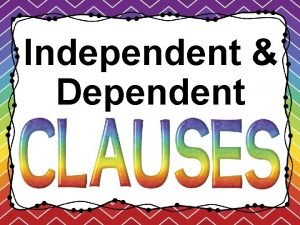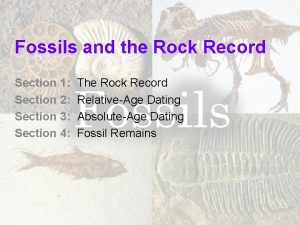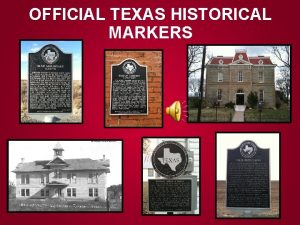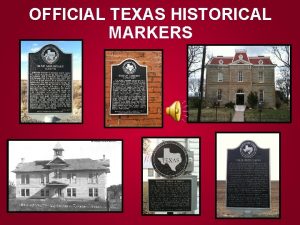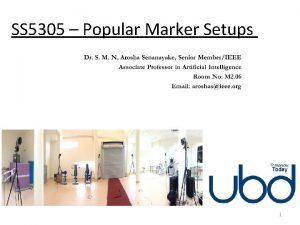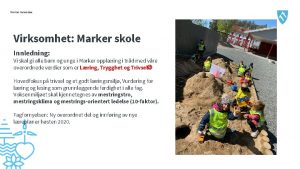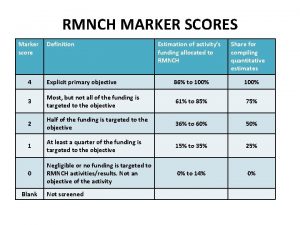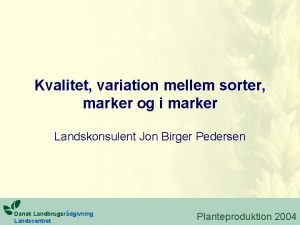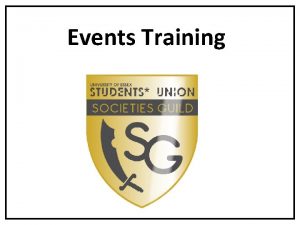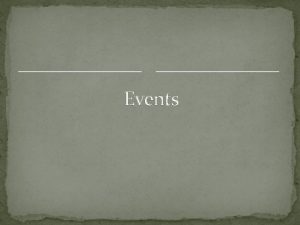History of Theory in OT Trends Marker Events
















- Slides: 16

History of Theory in OT Trends & Marker Events Read book chapter

Who are these people?

Founders of Occupational Therapy ¢ ¢ ¢ ¢ George Barton – architect, cured self through woodworking & gardening, first President of OT Association Isabel Newton – secretary, Consolation House, married Mr. Barton Eleanor Clarke Slagle – Johns Hopkins (worked with Adolph Meyer, psychiatrist (philosophy of OT), New York State Hospital, “Habit Training” Thomas Kidner – architect, Canadian William Rush Dunton, MD – edited first journal: Maryland Psychiatric Quarterly, believed in healing potential of occupation Susan Johnson – nurse, wrote book on OT Susan Tracy – nurse, not in photograph

1900 -1919 ¢ ¢ ¢ ¢ Moral treatment Mental Hygiene, humanitarian Invalid Occupation, Susan Tracy Arts & Crafts movement 1917 AOTA founded, Clifford Springs, New York (Consolation House) Reconstruction Therapy, William Dunton Re-education after injury, George Barton World War I, rehabilitation of wounded soldiers (biomechanical, restoration model)

1920 -1929 ¢ ¢ Economic Boom – age of invention Philosophy of OT: Adolph Meyer l ¢ ¢ ¢ Humanistic & Pragmatic Habit Training: Eleanor Clarke Slagle, use of normal daily activities with mentally ill Pre-industrial training (WWI soldiers), Thomas Kidner Number of occupational therapists expanded across both mental and physical interventions for the disabled

1930 -1939 The Great Depression ¢ Trend toward scientific approach continued ¢ Behaviorism (Skinner) applied scientific method to all aspects of human activity ¢ Birth of Behavior Modification as therapy ¢ OT used to help patients adjust to hospital life (long-term treatment, polio, tuberculosis, etc. ) ¢

1940 -1949 World War II ¢ Baby Boom began 1946 ¢ Growth in post-war vocational rehabilitation ¢ Kinetic model, range of motion studies ¢ OT activities seen as “cure” ¢ Attempts to match OT activity to diagnosis ¢ Medical Model prominent – Rehabilitation model in OT ¢

1950 -1959 ¢ ¢ ¢ Widespread use of phenothiazines (thorazine, etc. ) to treat mental illness Psychoanalysis – Freudian theory prominent OT groups (Fidler) used to treat ego skills Projective or creative arts commonly used by occupational therapists, Azima battery Crafts, adapted looms, adapted tools, prominent in treating physical disabilities 1954 Sensory Motor Therapy – Margaret Rood

1960 -1969 ¢ ¢ ¢ ¢ ¢ De-institutionalization movement Shift to community mental health Gail Fidler – Communication Process (Task Groups) Therapeutic communities used as treatment for mental illness Blurred roles for medical staff members Offshoots of OT: art therapy, music therapy, horticulture therapy, dance therapy, etc. Bobaths, NDT & other motor control theories emerged Reflex Development: Mary Fiorentino First “Willard & Spackman” used as text 1968, A. Jean Ayres – Sensory Integration introduced

1970 -1979 ¢ ¢ ¢ ¢ Decade of Frames of Reference Occupational therapist’s search for professional identity Many extremes of specialization in OT Growth & Development model, Lela Llorens Activity Therapy, Anne Mosey Developmental Groups, Anne Mosey Cognitive Behaviorism flourished PL 94 -142, education for handicapped kids

1970’s, cont. Sensory Integration flourished (Ayres) ¢ Play Model, Mary Reilly (Occupational Behavior Model, precursor of MOHO) ¢ Individual Adaptation (SI with Schizophrenics), Lorna Jean King ¢ Doing & Becoming, Gail Fidler ¢ First AOTA Uniform Terminology, 1979 ¢

1980 -1989 Decade of Clinical Reasoning ¢ MOHO, Gary Kielhofner, Janice Burke ¢ Spatiotemporal Adaptation, Grady & Gilfoyle ¢ Clinical Reasoning, Joan Rogers ¢ Client Centered practice, in Canada (CAOT) ¢ Rapid expansion of research, standardized assessments ¢

1980’s, cont. ¢ ¢ ¢ ¢ Movement toward professionalism Cognitive Disabilities Model, Claudia Allen Cognitive Rehab. Model, Toglia & Abreu Legislative milestones, licensure, ADA Manpower shortage in OT Managed care movement began, DRG’s Occupational Science founded ‘ 89: Elizabeth Yerxa

1990 -1999 ¢ ¢ ¢ ¢ Occupational Science expands rapidly Further expansion of research & publication in OT Many new developing programs for OT, COTA to accommodate greatly increased numbers Brain research, genetic engineering Neuroscience and cognitive theories predominate Psych & physical disability areas of OT practice merge De-specialization, use of same skills across specialty areas

1990+ ¢ ¢ ¢ Occupational Adaptation Model: Schkade & Schultz Ecology of Human Performance: Winnie Dunn Person-Environment-Occupational Performance Model: Christiansen & Baum Multicontextual Approach (Cognitive Perceptual): Joan Toglia Occupational Performance Process Model: Mary Law, et al.

2000+ ¢ ¢ ¢ ¢ OT Practice Framework replaces Uniform Terminology OT Paradigm Shift is confirmed Community practice replaces “medical model” (patient client, etc. ) Non-traditional OT roles emerge Client-centered model embraced, definition of client expands to include families, caregivers, social & cultural contexts, groups Evidence-based practice: Margo Holm OT Education moves to Masters Entry Level
 Mutually exclusive vs non mutually exclusive
Mutually exclusive vs non mutually exclusive Chapter 1 history and trends of health care
Chapter 1 history and trends of health care History and trends of health care
History and trends of health care Julius caesar chronological order
Julius caesar chronological order Mrs midas 10 mark question
Mrs midas 10 mark question Ethnic boundary marker
Ethnic boundary marker Surrogate marker
Surrogate marker Where to find greedy marker
Where to find greedy marker Ovarian cancer marker
Ovarian cancer marker What do red raised roadway markers mean
What do red raised roadway markers mean Whats a subordinate clause
Whats a subordinate clause Gramene marker
Gramene marker Aqa gcse pe 9 mark questions
Aqa gcse pe 9 mark questions Asl discourse markers
Asl discourse markers What is biological marker
What is biological marker Independent clause examples
Independent clause examples Mold fossil
Mold fossil

